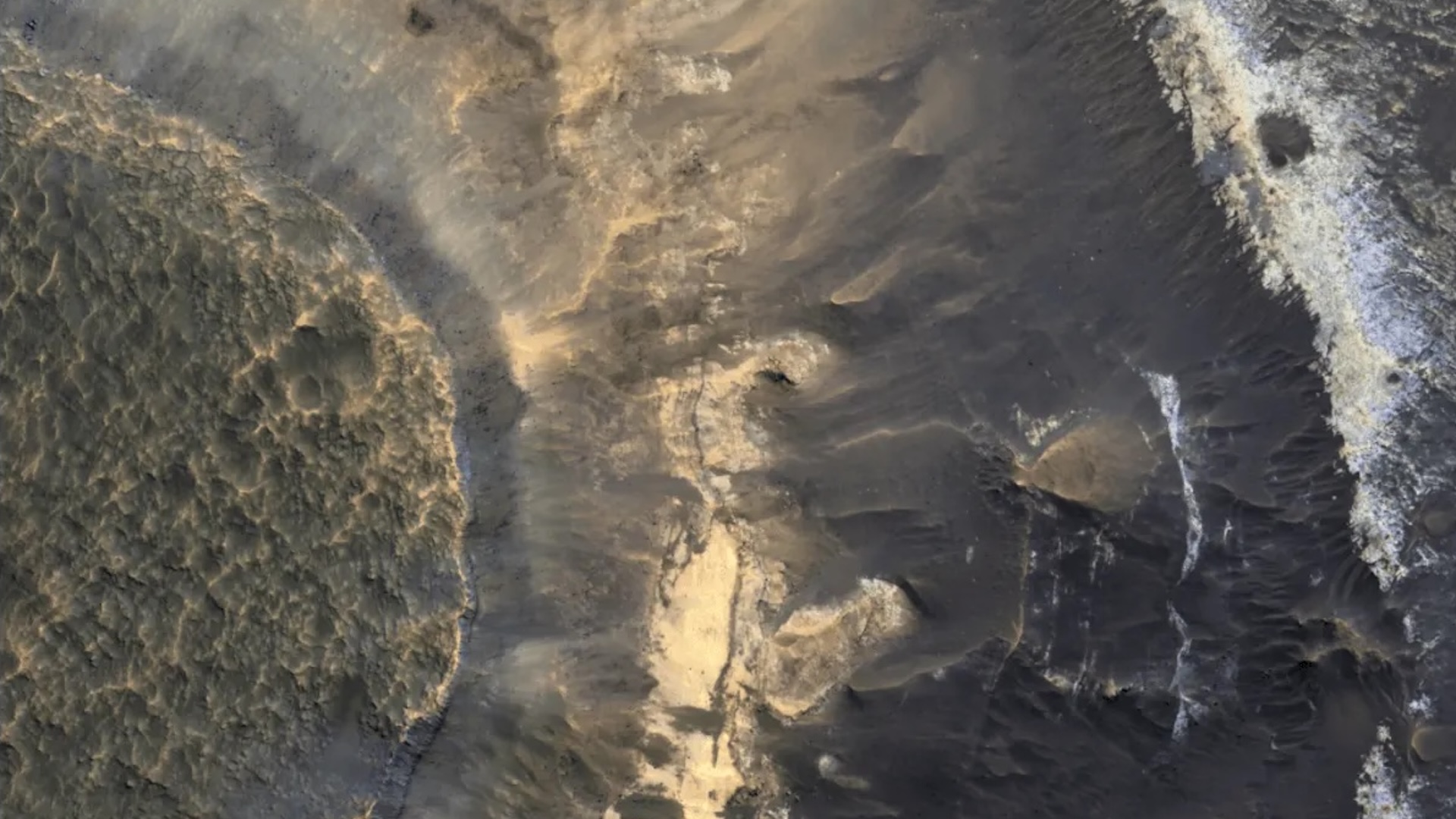What is antifa?
Reference article: Facts about anti-fascism.
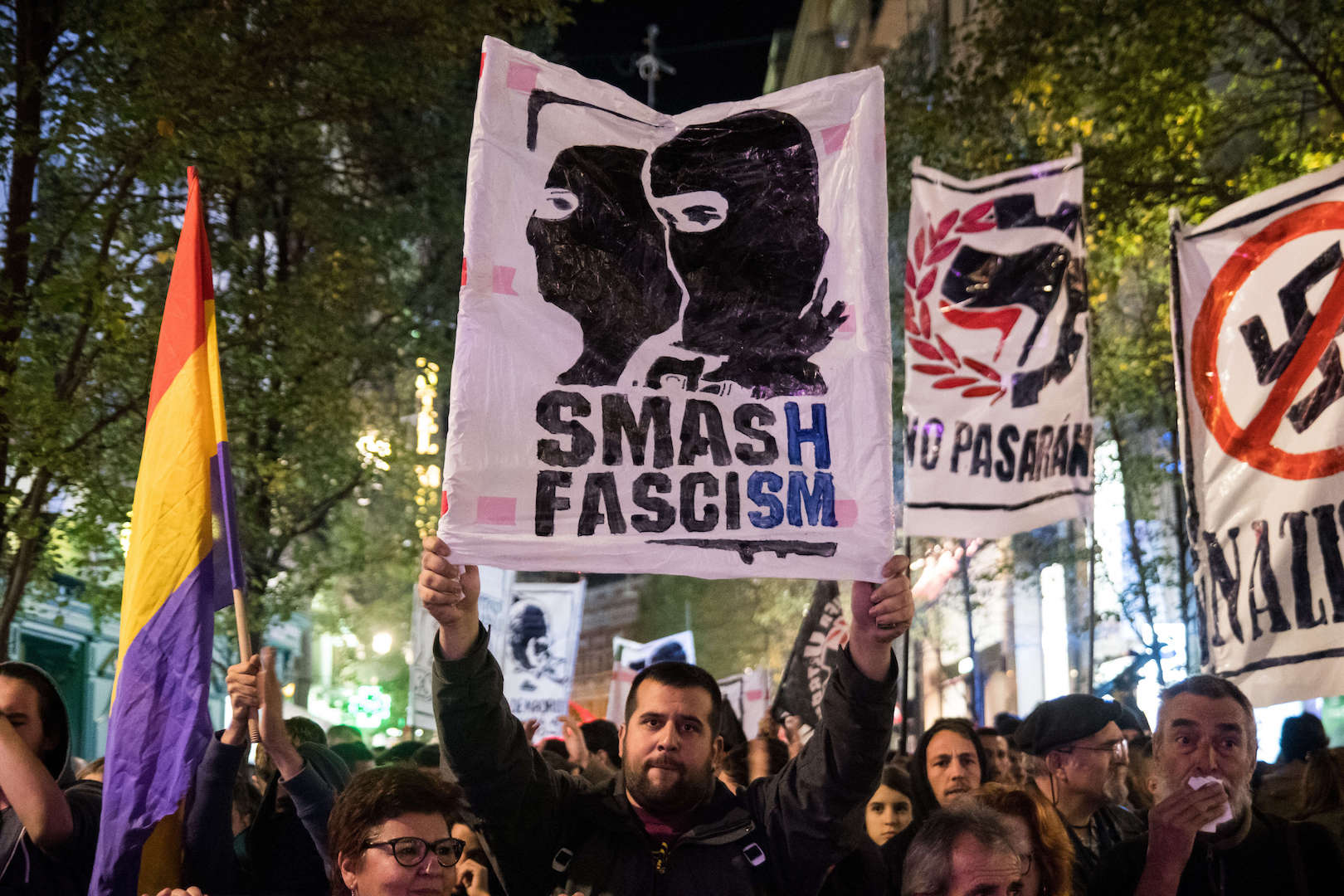
As long as there has been fascism — a political movement that stokes nationalism and racism, and uses violence to bolster authoritarian rule — there have been antifascists that resist such regimes. This relationship dates to the emergence of fascism in Europe in the 1920s, and then continued in Mussolini's Italy, in Nazi Germany, and elsewhere in the decades that followed, through to the present.
By the 1980s, people who opposed fascism in Europe's punk-rock communities were referring to themselves using the shortened term "antifa." But the term is often poorly understood. Antifa is not an organization; nor is it precisely a movement, though protestors of fascism worldwide may rally behind antifa banners and flags, historians and experts on fascism and antifascism told Live Science.
In America in particular, "antifa" is frequently used to conjure a picture of black-clad activists that are far-left, radical and violent extremists, even when antifa activists directly oppose groups who publicly espouse violence, such as white supremacists and neo-Nazis. Recently, President Donald Trump further added to this confusion by tweeting on May 31 that "ANTIFA" would be officially designated "a Terrorist Organization," following protests of police brutality against Black Americans.
Related: 13 significant protests that changed the course of history
Despite Trump's tweet, there is no central organization known as antifa. Rather, there are groups that identify with the ideals of antifascism, "and some of them — particularly those on the left — will call themselves antifa as an abbreviation of antifascism," said Federico Finchelstein, a history professor at the New School for Social Research and Eugene Lang College in New York City.
Sometimes, local activist groups will organize under the antifa name, such as Rose City Antifa (RCA) in Portland, Oregon, which formed in 2007 and "opposes fascist organizing through direct action [public protests or demonstrations], education, and through solidarity with leftist spaces, activists, and organizations," according to the RCA website. But among antifascists worldwide, the term antifa is not used universally, Finchelstein told Live Science.
"There is no group as such that can be presented as an entity," he said. And while antifa today is typically seen as left-leaning, the original antifascists from more than a century ago represented a range of political affiliations.
"Many were on the left, some were in the center, some were even conservatives," Finchelstein said. "But they all realized what fascism meant: the destruction of democracy from within and the creation of a dictatorship."
Many antifascist activists shun violence, but some say that the struggle against fascism may require violent acts, because fascism is itself an intrinsically violent movement, Mark Bray, a historian and part-time lecturer at Rutgers University in New Jersey, and author of "Antifa: The Anti-Fascist Handbook" (Melville House, 2017) told The New York Times.
"The argument is that militant anti-fascism is inherently self-defense because of the historically documented violence that fascists pose — especially to marginalized people," Bray said. Seen in this light, fascism's violent ideology makes any violent action taken against it an act of self-defense, according to Bray.
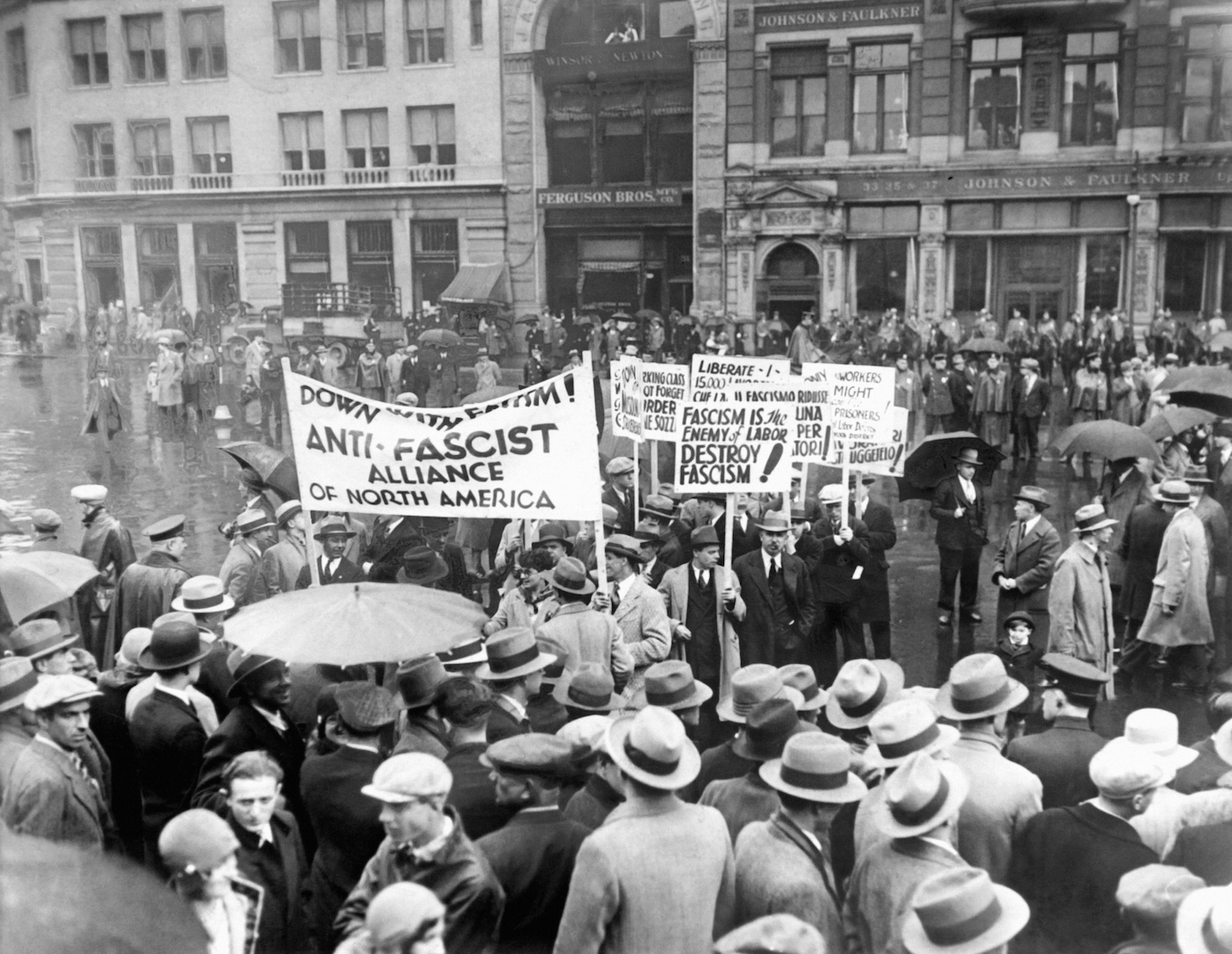
Combating fascism
Fascism first appeared in Italy in the 1920s under the guidance of Benito Mussolini, who coined the term "fascism" and who was the founder and leader of Italy's National Fascist Party. He rose to power with the help of a ruthless paramilitary force called the squadristi, or Blackshirts, who brutalized political opponents and silenced dissident voices, enabling Mussolini to dismantle Italian democratic institutions and appoint himself dictator in 1925, according to the BBC.
"Italy has the distinction, unfortunately, of having the first fascist movement. But it also has the distinction of having the first antifascist movement," said Stanislao Pugliese, a professor of modern European history and a Queensboro UNICO Distinguished Professor of Italian and Italian-American Studies at Hofstra University in New York.
"In the 1920s, even before fascism came to power, there were antifascist groups in Italy who, similar to today, understood that fascism was a completely different phenomenon on the political spectrum," Pugliese told Live Science. Through fascism, authoritarian leaders co-opt religion, education, technology and even leisure activities to control citizens and punish their opponents and critics, Pugliese said.
Adolf Hitler and the far-right Nazi Party soon planted the seeds of fascism in Germany, using violence and fanatical nationalism to erode democratic and personal freedoms, and to curtail freedom of the press and overturn human rights. In 1932, the Communist Party of Germany (KPD) established the group "Antifaschistische Aktion" — "Antifascist Action" — to oppose the fascist-leaning Nazis; the organization's original logo, two flags in a circle, is still used by antifascists today.
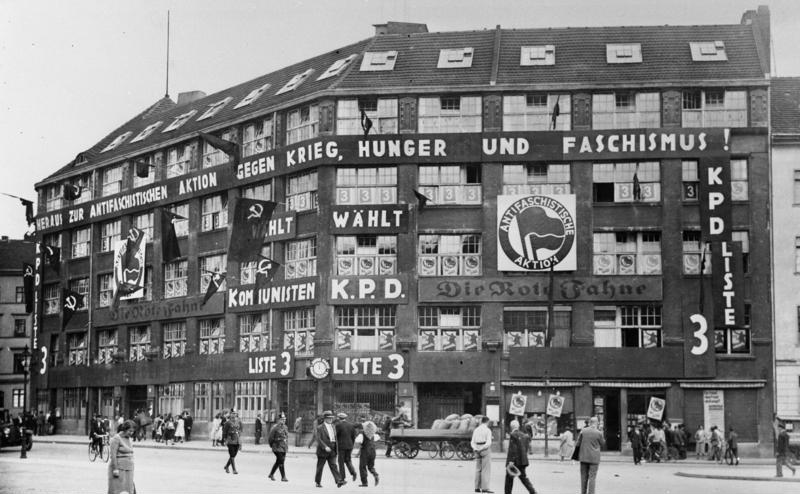
As the grip of fascist leaders tightened across Europe, opponents of fascism who weren't affiliated with communism emerged.
"These were people with different ideas that somehow created this very broad alliance on behalf of democracy," Finchelstein said. "To some extent, you could argue that the coalition that defeated the Nazis and fascist powers in World War II could be considered an anti-fascist coalition. They were people who realized that fascism stood against basic human rights and democracy."
Related: Who are the longest reigning dictators?
But fascism didn't die out with the fall of fascist dictatorships at the end of WWII, as the ideology had already begun to take root around the world, said Ruth Ben-Ghiat, a professor of History and Italian Studies at New York University.
"There were fascist movements in America, in Switzerland, in France, in Spain, and then fascism spread in Argentina," Ben-Ghiat told Time in 2019. "It’s a transnational movement. That’s how it stayed alive after 1945."
Neo-Nazi and anti-immigrant groups became active again during the late 1970s and 1980s in Great Britain, Eastern Europe and the U.S., and renewed antifascist activity in those regions followed; participants often identified themselves as "antifa" and mobilized through punk music scenes and through squatter communities — people who illegally lived in derelict urban buildings — Pugliese said.
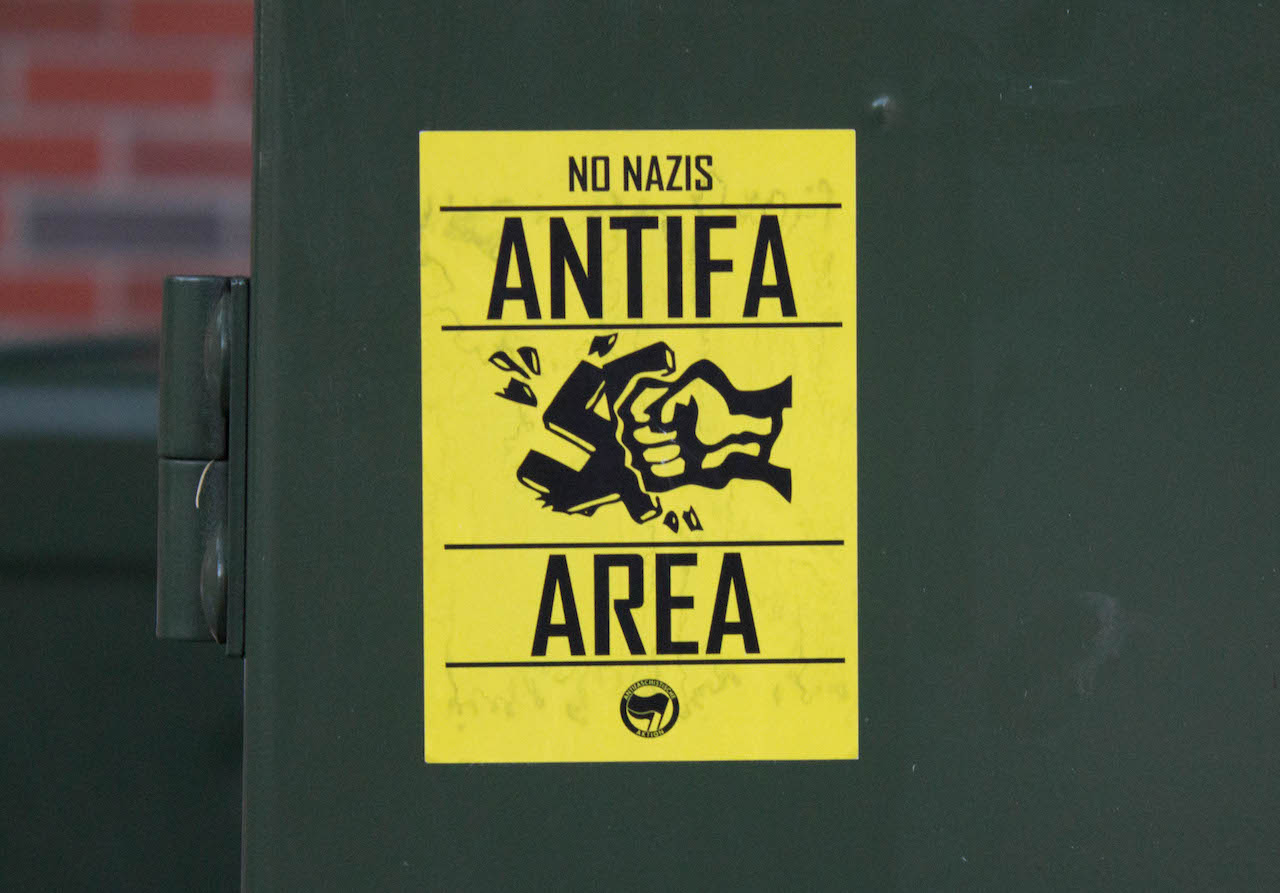
More recently, antifascists are again highly visible, counterprotesting in the U.S. at rallies staged by far-right extremists and white nationalists in cities across the country, according to ABC News. Antifa activism in America has also grown in response to prominent political figures openly embracing what are considered to be key elements of fascism: racism, dictatorship and the use of political violence, said Finchelstein.
"Of these three elements, we have seen two coming back: Political violence and its glorification, and racism at the center of politics," he said. "We don't yet have the third element, which is a key one: the destruction of democracy from within in order to create a dictatorship. And hopefully, this democracy as well as others will defend themselves against these attempts."
Antifascist activists in the 1930s may not have been able to predict the eventual outcome of fascism's rise. But for today's antifascists, fascism's grim legacy of terror, imprisonment and mass murder stands as a warning of exactly how much there is at stake, Pugliese told Live Science.
"We know how this movie ends," he said. "When you have people in the street waving swastikas or boasting that they're white nationalists, it ends with people being killed. And so the antifa argument is that, ignorance is no excuse here; we need to do everything we can to prevent these people from coming to power."
EDITOR'S NOTE: This article was updated on June 5 to reflect that Mark Bray is no longer a lecturer at Dartmouth College, and is currently with the History Department at Rutgers University.
- Confederate flag protest: 6 flags with heated histories
- Satellite spots Iraqi protests at US embassy from space (photos)
- Frequently asked questions: Egyptian protests
OFFER: Save 45% on 'How It Works' 'All About Space' and 'All About History'!
For a limited time, you can take out a digital subscription to any of our best-selling science magazines for just $2.38 per month, or 45% off the standard price for the first three months.
Get the world’s most fascinating discoveries delivered straight to your inbox.

Mindy Weisberger is an editor at Scholastic and a former Live Science channel editor and senior writer. She has reported on general science, covering climate change, paleontology, biology and space. Mindy studied film at Columbia University; prior to Live Science she produced, wrote and directed media for the American Museum of Natural History in New York City. Her videos about dinosaurs, astrophysics, biodiversity and evolution appear in museums and science centers worldwide, earning awards such as the CINE Golden Eagle and the Communicator Award of Excellence. Her writing has also appeared in Scientific American, The Washington Post and How It Works. She is the author of the book "Rise of the Zombie Bugs: The Surprising Science of Parasitic Mind Control," published by Hopkins Press.

